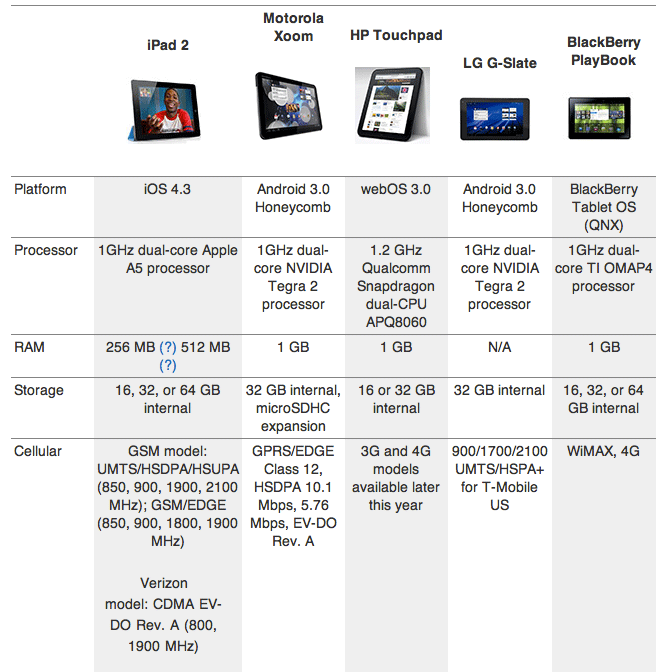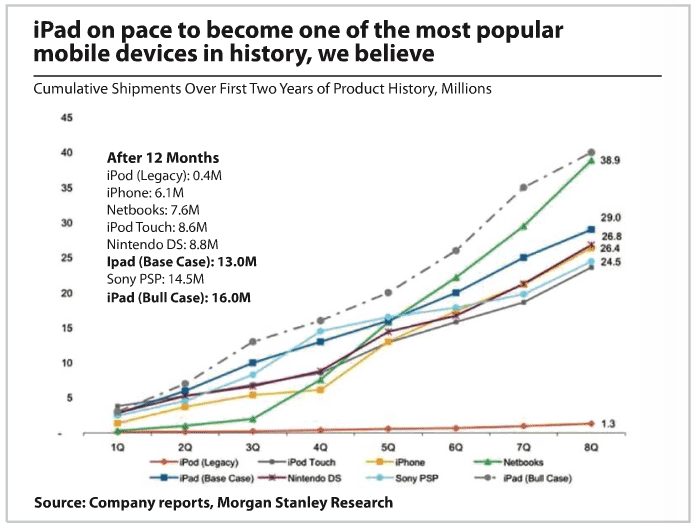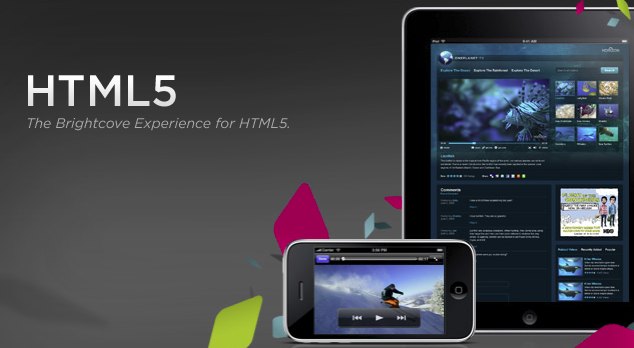ipad
-
Infographic: How To Optimize Your Life With An iPad
–
Nextworth has published a nifty infographic illustrating all of the novel uses for the iPad. Since the release of the “New” iPad with high res Retina Display, there are even more uses – certainly including geofencing with the iPad, as well as iPhone.
-
iPad 2 or wait?
–
IntoMobile recently published a quick comparison chart of the iPad 2 versus the current competition. Although the new iPad 2 does have some significant upgrades – cameras, gyro, A5 processor, I don’t think that it’s compelling enough to prompt existing iPad owners to immediately upgrade. However, this new iPad is good enough to possibly get…
-
iPad Demographic Trends
–
Quick post today. A few weeks ago I got an iPad, and have been having a great time getting more in depth with its applications and market positioning. Increasingly as the tablet market gets bigger, brand presence on the iPad is becoming more relevant. A few key snippets on the rise of the iPad, with…
-
Shopping App’s Use For Geo-Location
–
A quick thought on using a mobile phone’s GPS in a novel fashion for an online retailer. Nowadays basically every mobile phone has a gps chip in it, and all smart phones can provide location data to the apps they run. Recently I was asked by a client about ideas for possibly reaching out to…
-
Apple’s iPad and HTML5 Power Play
–
Is Apple’s reluctance to include flash on iPhone or iPad actually a veiled play to change the entire face of code and web standards on the internet, and beyond? Or are they just hoping to sell more apps? I think that Apple’s strategy here goes both ways – and hopefully, both outcomes will change both…



